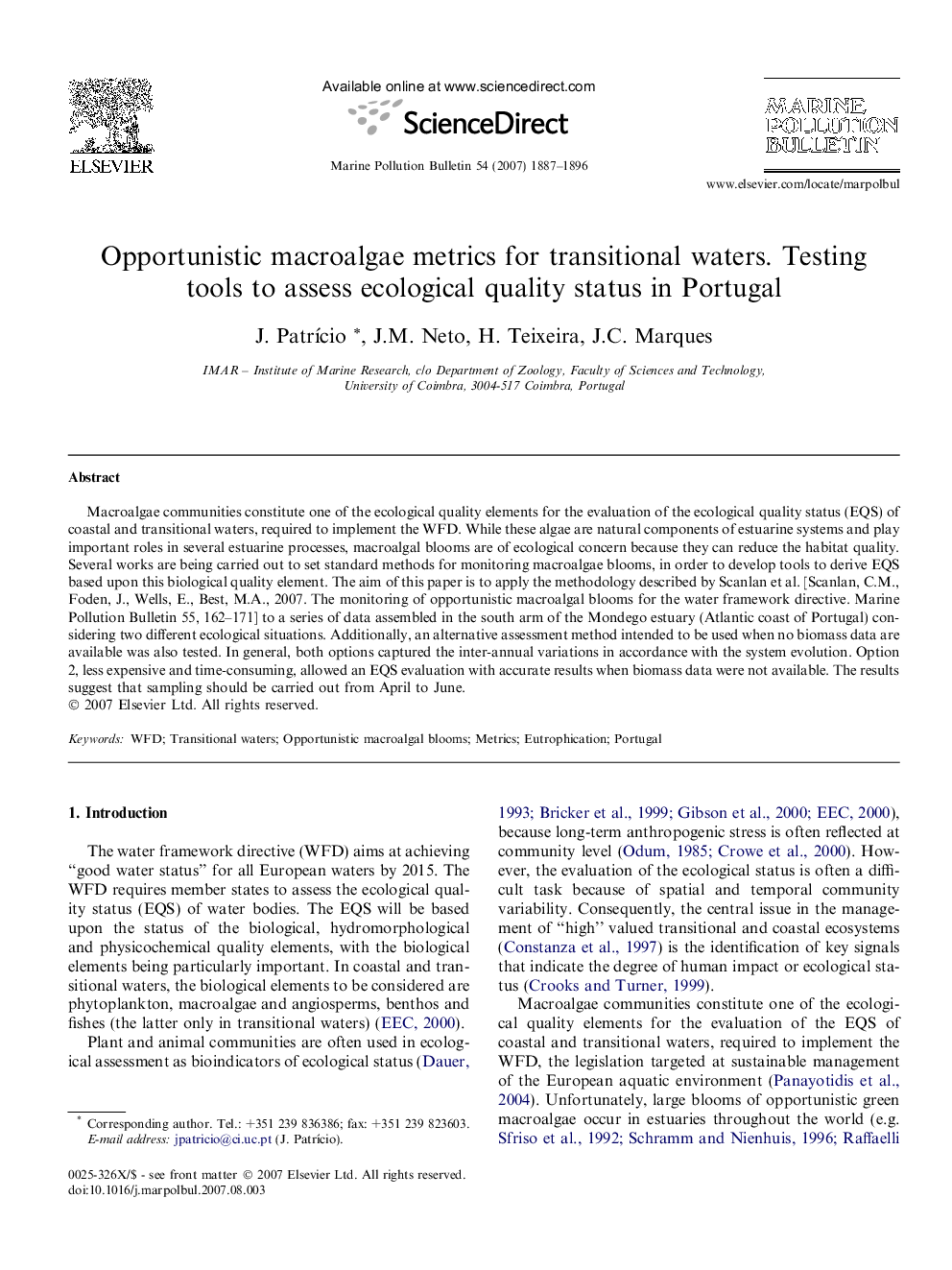| Article ID | Journal | Published Year | Pages | File Type |
|---|---|---|---|---|
| 4477705 | Marine Pollution Bulletin | 2007 | 10 Pages |
Macroalgae communities constitute one of the ecological quality elements for the evaluation of the ecological quality status (EQS) of coastal and transitional waters, required to implement the WFD. While these algae are natural components of estuarine systems and play important roles in several estuarine processes, macroalgal blooms are of ecological concern because they can reduce the habitat quality. Several works are being carried out to set standard methods for monitoring macroalgae blooms, in order to develop tools to derive EQS based upon this biological quality element. The aim of this paper is to apply the methodology described by Scanlan et al. [Scanlan, C.M., Foden, J., Wells, E., Best, M.A., 2007. The monitoring of opportunistic macroalgal blooms for the water framework directive. Marine Pollution Bulletin 55, 162–171] to a series of data assembled in the south arm of the Mondego estuary (Atlantic coast of Portugal) considering two different ecological situations. Additionally, an alternative assessment method intended to be used when no biomass data are available was also tested. In general, both options captured the inter-annual variations in accordance with the system evolution. Option 2, less expensive and time-consuming, allowed an EQS evaluation with accurate results when biomass data were not available. The results suggest that sampling should be carried out from April to June.
